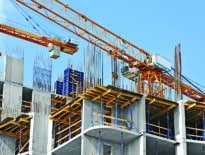Natasha Espada
Founder and principal, Studio Enee
Industry experience: 25 years
As the first Latina to serve as president of the 4,500-member Boston Society of Architects, Natasha Espada wants the industry to move beyond its comfort zone. Many members of the public don’t understand the role of architects and the value of their work, Espada said, so she’s pushing for the organization to expand its outreach to underserved communities. A former associate principal at Leers Weinzapfel Assoc., Espada founded her own firm, Needham-based Studio Enee, in 2013.
Q: How are architects dealing with the new work-from-home routine?
A: Luckily for us at Studio Enee, we’re under 10 people in Needham, and the way I built the firm five years ago allows us full flexibility. We all work on laptops, gaming computers, that allow us to run all of our graphic programs and drawing programs. Everything we have is on a cloud, so we’ve had no issues with any of it. At BSA, I created a task force for a best practices guide for firms, and we have webinars twice a week, and the first one was on work from home. We had one today on construction administration, which is a bigger challenge for us than working remotely. The biggest piece right now is safe sites and construction supervision, because it’s physical.
Q: What’s the BSA’s role in helping officials identify temporary COVID-19 hospital sites?
A: We have a task force being put together on this right now. The biggest thing we can do is assist with the identification and evaluation and retrofitting facilities. We talk about dorms, and those are good for certain things. We have engineers to look at air exchanges. One of the facilities at Vanderbilt University has transformed an underground parking garage into a space for beds. We’re looking at creative ways of doing this.
Q: What prompted you to consider architecture as a career?
A: I was always interested in art, but also very good in math, and my father said to me, “You might want to try architecture.” I studied in Italy for a semester and my parents moved to Toyko and I worked for an architect there, starting as an undergraduate, and I just kept going and I haven’t stopped.
Q: What’s BSA doing to promote diversity and inclusion in the local industry?
A: I’m the first Puerto Rican and Latina president for BSA, and I’ve been working for two years on equity, diversity and inclusion. AIA has issued guidelines for equitable prices, and one of the things I created was two new knowledge communities, equity, diversity and inclusion and the other is for the LGBTQ community. They didn’t have any representation.
We have a 50-50 split between women and men in architecture schools, and by the time women get registered, only a very small percentage remain in the profession. It’s an incredibly low number for minorities and Latinos.
We’re determined to get a pipeline of people into the profession. People need to see themselves in a role and to see that it’s a positive. We have to teach children that being an architect is a possibility, even if they don’t see people like that in their neighborhood.
The other piece is making Boston a design community, bringing art and design to the neighborhoods. The BSA Foundation is involved in bringing design to all of the schools in Boston, and we’ve tripled the number of students we’ve been reaching in underserved populations. We also like to partner with the Main Streets organizations and [are] hoping to bring civic design into it as well.
As projects are being put on hold for different reasons, especially the construction ones, how do we start looking for areas that want design thought and leadership throughout the city? If things slow down, there’s an opportunity for the membership to be able to contribute in projects throughout the city.
Q: Are you hearing from member firms about hiring freezes or layoffs?
A: It’s still evolving because of the uncertainty. I haven’t heard of any layoffs yet. Part of the best practices is to create a pool of work sharing, so if projects are on hold temporarily, they don’t have to let go employees and we can share resources. Others are very busy in design, because clients want to be ready when construction starts up again. Everyone is trying to find creative ways of utilizing their staff, and hoping not to have to lay anyone off, but it’s so uncertain now we don’t know what’s coming.
Q: What advice do you give to early career architects about paths to advancement? Should they be generalists or pursue a specialty?
A: What’s interesting about the architecture profession is that it’s evolving in many ways. It’s collaborative and it touches a lot of pieces of society. What I recommend for people is for students to not focus on one type of firm or work. Try different things to see what they are passionate about. It’s not as traditional as it used to be. It’s evolving and there’s more opportunities.
Espada’s Five Favorite Buildings in Greater Boston:
- Trinity Church, by H.H. Richardson
- The MIT Chapel, by Eero Saarinen
- Harvard’s Carpenter Center for Visual Arts, by Le Corbusier
- John Hancock Tower, by Henry Cobb of Pei Cobb Freed & Partners
- Boston Public Library Courtyard, by McKim, Mead & White




 |
| 

